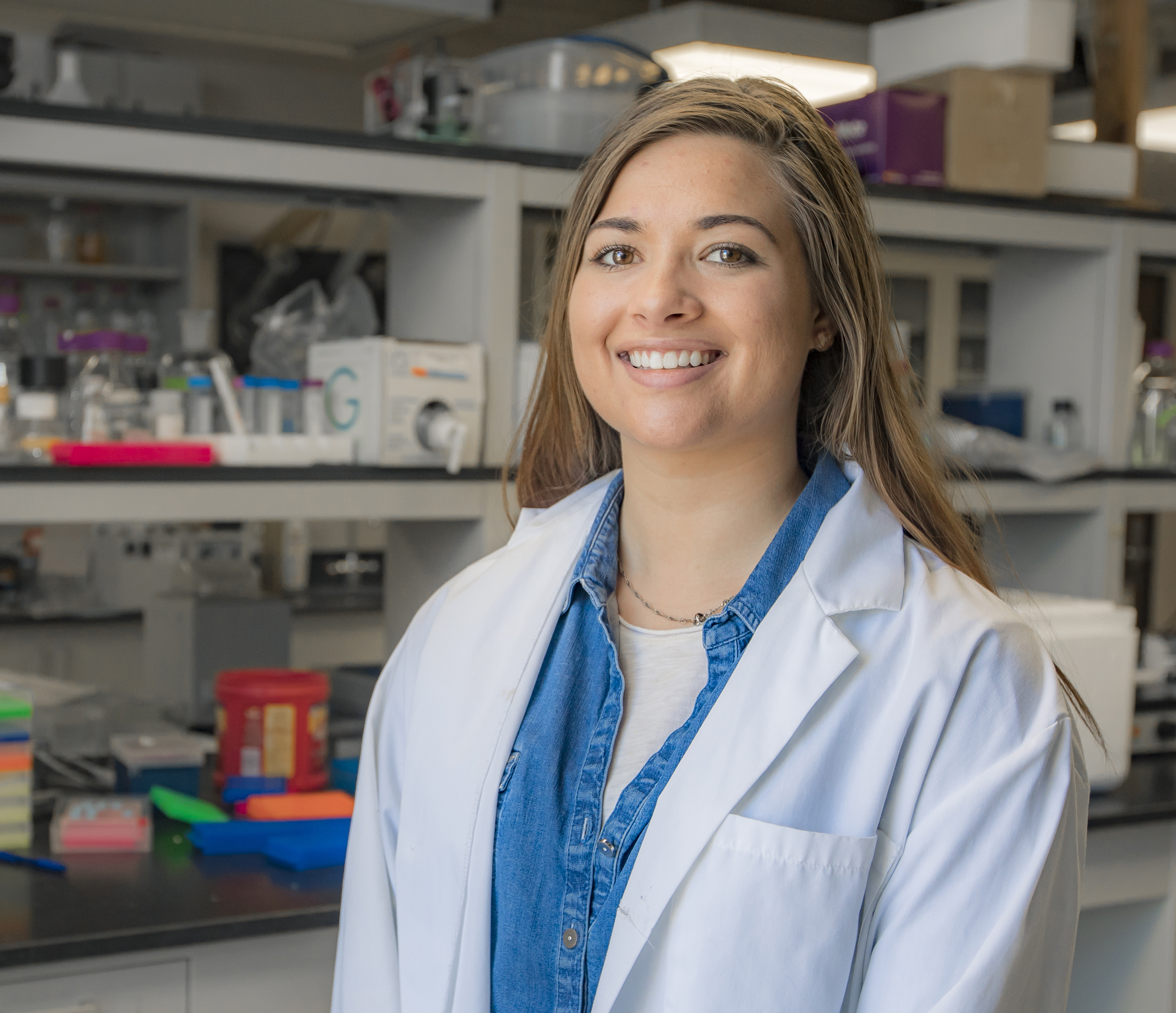The first generation of STEMCats students are graduating equipped with unique research experience.
By Tatyanna Pruitt
In 2014, The University of Kentucky College of Arts & Sciences was awarded a $1.9 million grant to improve retention of students interested in the STEM fields, one of 27 research institutions selected by the Howard Hughes Medical Institute (HHMI). As a result of that grant, A&S created STEMCats, a Living Learning Program (LLP) for first-year college students interested in STEM fields.
STEMCats began in the Fall of 2014 and facilitates exploration of research and career opportunities in STEM-related courses while providing a like-minded community for students interested in fields such as biology, chemistry, geological sciences, math, neuroscience, and physics. Four years later, the first students to join STEMCats will walk across the stage at Rupp Arena and graduate this May.
“My experience here at UK has been so much more than I thought it could’ve been. I am extremely thankful for the University, my job as a peer mentor, and for the STEMCats program,” said Nicole Mitchell, a biology senior from Louisville, one of the first students to join STEMCats as an incoming freshman and now a STEMCats peer mentor. “I’ve been very happy the past four years.”
Breah Johnson, a biochemistry senior from Atlanta, was another member of the STEMCats freshman class in 2014. Neither Johnson nor Mitchell had planned on UK being their home for the past four years. They both changed their minds when they came to campus for a tour. “I just knew this would be the right fit for me,” Johnson said.
Mitchell agreed: “I could see myself coming here. This is exactly how I wanted college to feel.”
Before deciding to come to UK, neither student knew about the STEMCats program or what it offered. “Prior to my SeeBlue U Orientation, I had no idea what STEMCats was,” Johnson said. “There was a guy handing out flyers and explaining that if you’re part of this LLP you’ll get all types of benefits, such as moving into your dorm early, being able to meet students with similar interests, and being able to do research. After hearing that, it was a no-brainer to me; of course I wanted to be involved.”
Mitchell learned about STEMCats from a postcard mailed to her house. “The postcard talked about getting to know your professors better and being able to do research,” she said. “Obviously being a biology major, I thought it would be amazing to do research my freshman year.”
Both Johnson and Mitchell enjoyed their experience in STEMCats so much that they have continued to work with the program as peer mentors every year. This has given them a firsthand view of how the program has evolved over the years.
“They have made so many changes and I feel that it has really benefited the students. For example our freshman year we would only have one speaker come and talk to the class,” Johnson said. “Now we have three to four speakers for a class period to keep the students engaged and interested.”
Mitchell agrees: “One of the things I love about STEMCats is that the faculty really listen to the students and mentors and make improvements each year. I’ve always felt valued throughout the program, and that makes me want to come back and give more.”
STEMCats is designed to help students succeed in their college career and prepare them both academically and socially through participation in research opportunities, special seminar courses and FastTrack, an academic program designed to prepare first-year students for rigorous undergraduate course work in STEM fields.
“Students participating in STEMCats build confidence, enthusiasm, and a sense of belonging to UK, and experience a smoother transition to college,” said Jesse Hedge, assistant dean for enrollment management and decision support in the College of Arts & Sciences.
Biology professor Doug Harrison has been involved with STEMCats since its beginning. One of the valuable benefits of STEMCats is the opportunity it gives students to conduct research their freshman year.
“One of my favorite things is seeing the students really get excited about biology and what they are doing. I love being able to give them an experience they normally wouldn't get until their junior or senior year,” Harrison said.
As peer mentors, Johnson and Mitchell are assigned to a group of freshmen to answer questions, help with classwork, improve their transition from high school to college, host events (academic or social), and organize study sessions for major exams.

Peer mentors in STEMCats also help in the labs during the spring semester. “I serve the role as facilitator between the students and the professor,” Johnson said. “STEMCats has helped me grow as a person with my leadership skills. Since being in this program from freshman year to now it has changed so much. I love being part of the change.”
“I think that what I get out of it is so much more than just a paycheck. I love having a job that allows me to give back,” Mitchell said.
Being in STEMCats helps students and peer mentors create connections not only with other students, but with professors too.
“I participated in a research program this past summer which was under Dr. Hollie Swanson, a professor in pharmacology and nutritional sciences in the College of Medicine. I met her through STEMCats my freshman year. One of the qualifications for the position was previous research experience, which I had thanks to STEMCats,” Johnson said. “In the lab with Dr. Swanson, we studied drug interactions with breast cancer. Having previous research experience with STEMCats made me stand out from the other applicants and helped me get the job.”
STEMCats isn’t just an academic program; it’s a community.
“I’m more than thankful for all of the experiences I’ve had at UK,” Johnson said. “STEMCats has opened me up to thinking that anything is possible.” &
